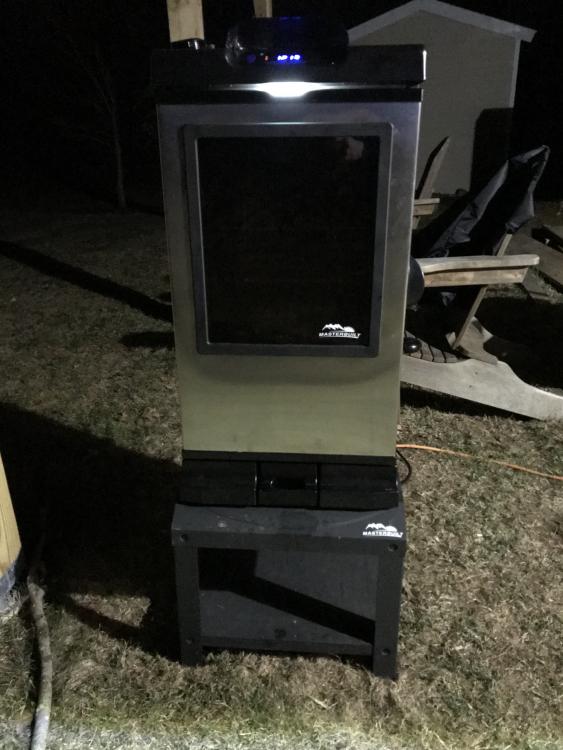Leaderboard
Popular Content
Showing content with the highest reputation on 04/14/2018 in Posts
-
So, there are a couple possibilities. The first is that you have reached the limits of the amp, and the second is that you've reached the limits of the headphones. If it is the second, then there is no solution to the problem other than changing to different headphones. If it is the first, it depends on whether you are hearing distortion due to the amp running out of voltage, or current. The KGSSHV uses +/-450 volt or +/-500 volt power supplies, so its voltage limits are higher than the BHSE (which uses +/-400 volt PS), and close to or the same as the DIY T2 - in fact, there is less than 1 dB difference between the max voltage output of the KGSSHV with 450 volt PS and the DIY T2. The alternative is that you are hearing distortion due to current limiting, which could be alleviated by increasing the standing current in the KGSSHV. However, a more important point is, that if you are listening regularly at "deafening volumes", you are likely irreparably damaging your hearing. One sign of this is that if you hear ringing in your ears after a listening session, that is, as someone colorfully put it, "the scream of a dying acoustic nerve." You can replace headphones and amplifiers. You cannot replace your ears. Once your hearing is gone, it is gone.3 points
-
3 points
-
I quick test on my system with BHSE and 007mk2.9 says this is a problem with a component in your chain. With hard diving edm/pop at volumes that made me cringe I experience no distortion. Fwiw I ride motorcycles all the time and my wife thinks I'm deaf. My normal listening volume is determined by her yelling across the house at me. Ymmv.3 points
-
3 points
-
2 points
-
Test Tone @ Home live right now: http://mixlr.com/illuminator/chat2 points
-
The 580V voltage is for the headphones - this is sometimes called biasing the headphones. When you change the resistors on the output stage you have to adjust the currents in the output stage so that the output sits at zero volts with respect to ground - this is referred to as biasing the output stage. These are two separate things that are not related to each other except that they are sometimes referred to with the same term - "bias."2 points
-
We did end up buying the hand made, foam and latex free bed. It was over the top, but, after daily back pain for years, to suddenly realize my back has not hurt since the day we got it has made the price worth it.2 points
-
Had lunch with Grawk at Champy's in Chattanooga Great time catching up before he went off to a bacon festival he didn't invite me to Sent from my ONEPLUS A3000 using Tapatalk1 point
-
For trick bicyclists and wood workers, here's a short youTube video on making small kicker jump and landing ramps:1 point
-
Sorry, fell asleep when I got home last evening. Didn't even have a chance to pour myself a drink. But I've listened to it twice now. I'm kind of surprised you didn't do a special Oliver Lieb's birthday edition.1 point
-
1 point
-
1 point
-
1 point
-
1 point
-
The Copenhagen is a differential cascode circuit. The Copenhagen V uses tubes (valves) for the upper device, while the Copenhagen S uses transistors (sand). They are otherwise just about the same. It does indeed use input and output transformers (amorphous Lundahls in both cases, though the inputs can use mu metal instead). The tubes (E81L's) need not be matched at all. It is what is often called a "transconductance amp". In essence, it uses the headphone's impedance as an I/V converter, and it takes advantage of the slight Sennheiser impedance bump to make it a bit more euphonic. When used with Senns, I'd describe the sound as happy and punchy (kind of making them sound like how Grados would sound if they were not grating) - some people hate it, others love it, but it definitely has a sound. It can be linearized with the addition of some parallel resistance on the output (this is what a triode amp does except the parallel load is the tube plate impedance). Without doing that, it is not great with the Focals. Even with, they are so poorly damped that it would not be my first choice for powering them. With phones that have a flat impedance, it is pretty neutral. It's not an amp for everyone (definitely not for the objectivist crowd), but it is my favorite these days - I use a Copenhagen S with 650's for most pleasure listening.1 point
-
Into the Badlands -- martial arts of the completely unrealistic school, lots of wirework, swordplay, post-post-apocalyptic society, barren and windswept wastelands, a 5 ring Chinese broadsword, Nick Frost, plenty of hot chicks and gruesome violent deaths, what more could a boy want?1 point
-
OK boys steady yourselves.... Oh Yeah! It’s my new toy, I haven't got my grubby hands on it yet, it’s making it’s way from Portugal.1 point
-
We all knew this was going to happen but I've taken the SR-507 I got less than 24 hours ago apart. Stax does warn about any and all tampering voiding the warranty so don't try this at home kids. First off, lets remove those driver housings from the arc assembly (they just pull out like on the two other Lambda designs). Here are the 507 name plates: Now lest lift up the four corners of the earpads and remove the screws which fix the baffle to the back grill. The baffle just pulls out and we are greeted with this: Now this is very different from the other Lambdas, gone is the aluminum baffle with the driver glued onto it and now we have a molded plastic baffle with a cradle for the driver to sit in. I'm not sure what plastic it is but it is very stiff. Like I said above, Stax warns about the warranty being void if one tries to tamper with the headphones which would explain this: Now this just confirms what I thought as soon as I opened up the headphones, the drivers are not glued together but rather just stacked together inside the shell. This is how the SR-Omega is assembled, also the SR-007 and the SR-003. Throwing caution to the wind I remove those 4 screws: Here we can see the silicone o-ring used to seal the back of the driver and the new chrome look of the metal plate used to hold the dust cover in place. Now it's time to put my hunch to the test and see if the dust cover is glued to the stator: Indeed it is not though there is some compound used between them. This gives us a direct view of the stators which appear to be coated metal plates, similar to the newer stator design introduced in 1994 with the Lambda Nova Signature. Since I don't happen to have a clean room to do stuff like this I tried to keep the drivers uncovered for as short a time as possible. There are glue pads on the end of the driver so I decided not to mess with them and try my luck exposing the diaphragm. From the side view offered where the connections the diaphragm is still mounted to two solid brass rings like on all the other Lambdas. Now we take a look on the other side of the driver. With the new earpad design this is quite simple, just use a knife to lift up the cloth cover and you can see the protective mesh: This is the same silver colored material found on the post 2004 models. The arc is also new and very substantial if a bit uncomfortable for somebody with a gigantic head like me. They need a lot of parts to make this one work and plenty of screws. None of the cost cutting seen in the post 1994 arc assembly here. Now they are back together and needless to say, they work perfectly.1 point













